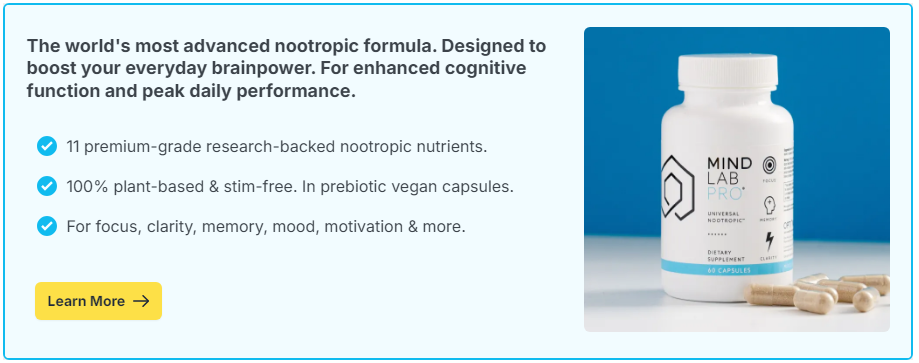
You’re halfway through a task when suddenly, you feel the pull. Maybe it’s a tab you haven’t checked. A new video suggestion. A ping. A sudden urge to Google something completely unrelated. Sound familiar?
This isn’t laziness. It’s not even lack of willpower. It’s your brain doing what it was wired to do: chase novelty.
But in a world overflowing with distractions, that ancient drive to explore new stimuli can sabotage deep work, attention, and long-term goals. Unless you know how to work with it.
Contents
The Brain’s Built-In Bias for Newness
From an evolutionary standpoint, seeking novelty was a survival trait. New environments meant new food sources—or new threats. Our ancestors who were curious and attentive to change were more likely to adapt, escape danger, and find opportunities.
Today, the same brain circuitry that once scanned for predators now scans for fresh content, new messages, and surprise notifications.
Key Neurological Players:
- Dopamine: The main neurotransmitter involved in motivation, anticipation, and novelty detection. It doesn’t reward success—it rewards pursuit.
- The ventral tegmental area (VTA): Signals when something is new or unexpected, kicking off dopamine release.
- The hippocampus: Registers novelty and passes it to the reward system to determine if it’s worth attention.
When something new shows up—an idea, a sight, a sound—your brain fires up. It says, “Pay attention. This might be important.”
Novelty Feels Good (But Comes at a Cost)
Novelty lights up the brain’s reward circuitry. This is why:
- You get a dopamine hit when you open a new tab, app, or video
- Social media thrives on ever-refreshing content
- Productivity suffers during task-switching, but still feels stimulating
Here’s the problem: novelty seeking is addictive. The brain starts craving the rush of the new over the satisfaction of completion.
Consequences of Chronic Novelty Seeking:
- Fragmented attention spans
- Difficulty staying with discomfort (which most complex tasks require)
- Surface-level knowledge without depth or integration
- Reduced cognitive stamina over time
The more we feed the novelty loop, the more our baseline for stimulation increases—and the harder it is to sit still, concentrate, or complete focused work.
Is Novelty Always Bad? Not at All.
Novelty isn’t the enemy. It’s one of your brain’s most powerful learning and creativity tools. In fact, well-timed exposure to something new can:
- Boost memory encoding
- Enhance problem-solving
- Increase motivation for learning
The key is to harness novelty in the service of focus, not against it.
How to Trick Your Brain Into Focus—Using Novelty
Here’s how to work with your novelty-seeking brain instead of fighting it:
1. Break Tasks Into Micro-Novelty Units
Instead of staring down a 3-hour project, break it into 15- to 25-minute segments with distinct goals. Every time you complete one, the brain gets a mini “novelty” signal—something new has begun.
2. Change Environments Strategically
Switching rooms or settings can boost mental refreshment without switching tasks. Even small environmental shifts (lighting, background sound) can re-engage your brain’s interest in the same work.
3. Use Novelty as a Reward
Set up short “novelty breaks” after focused work sessions. Instead of resisting the urge to check your phone, schedule it in—but after 25–30 minutes of uninterrupted focus.
4. Inject Controlled Variety Into Routine
- Use different tools for the same job occasionally (pen and paper vs. keyboard)
- Alternate music or silence
- Vary posture (standing desk, sitting, walking while thinking)
5. Pair New Stimuli With Familiar Tasks
If you must engage novelty, tie it to your goals. Read about a new concept related to your field. Listen to a podcast on a topic you’re working on. This channels novelty into progress.
Why Your Brain Gets Bored So Quickly
When the brain habituates to a stimulus—something it’s seen or done many times—it tunes out. This helps conserve energy, but it can also backfire in high-stimulation environments.
Digital content moves so fast that even 15 seconds of stillness can feel uncomfortable. Your brain learns that if something isn’t instantly rewarding, something else will be—just one swipe away.
This rewires attention spans and makes long-form thought feel “boring” when it’s actually essential mental work.
Can Nootropics Help Counter Novelty Overload?
Some people use nootropic supplements to help recalibrate the brain’s reward sensitivity and support focus even when tasks aren’t immediately novel.
Popular compounds include:
- Citicoline: Supports sustained attention and mental energy—great for long work blocks
- L-theanine + caffeine: Creates calm alertness with less crash or novelty-chasing jitteriness
- Rhodiola rosea: Helps maintain focus and stamina under stress
These compounds don’t remove distraction, but they can help your brain tolerate and engage with complex, low-dopamine tasks.
Build a Brain That Stays Curious—Without Losing Focus
In the right context, novelty keeps the mind alive. It fuels learning, creativity, and exploration. The trick is knowing when you’re chasing novelty for growth—and when it’s becoming a form of escape.
Signs You’re Using Novelty Productively:
- You’re exploring new angles on existing work
- You’re integrating what you learn over time
- You maintain attention through guided change, not endless switch-ups
Signs Novelty Is Derailing You:
- You abandon tasks mid-stream for unrelated ones
- You’re more motivated by starting than finishing
- You feel scattered, overbooked, and mentally tired despite doing “so much”
Your brain is wired to notice what’s new. But it’s also capable of training attention, building depth, and anchoring focus. Novelty isn’t the enemy—it’s a tool. One that can either distract or drive you, depending on how you use it.
So next time you feel the pull of the next shiny thing, pause. Ask: “Is this new… or just easier?” And if it’s the latter, see what happens when you stay.
Your best thinking often waits just beyond the boredom.

